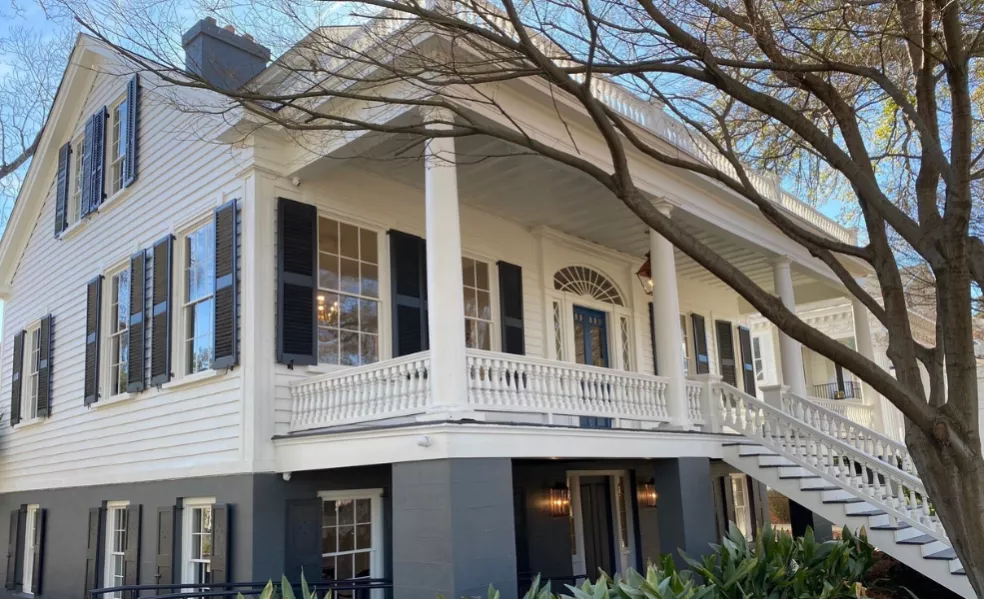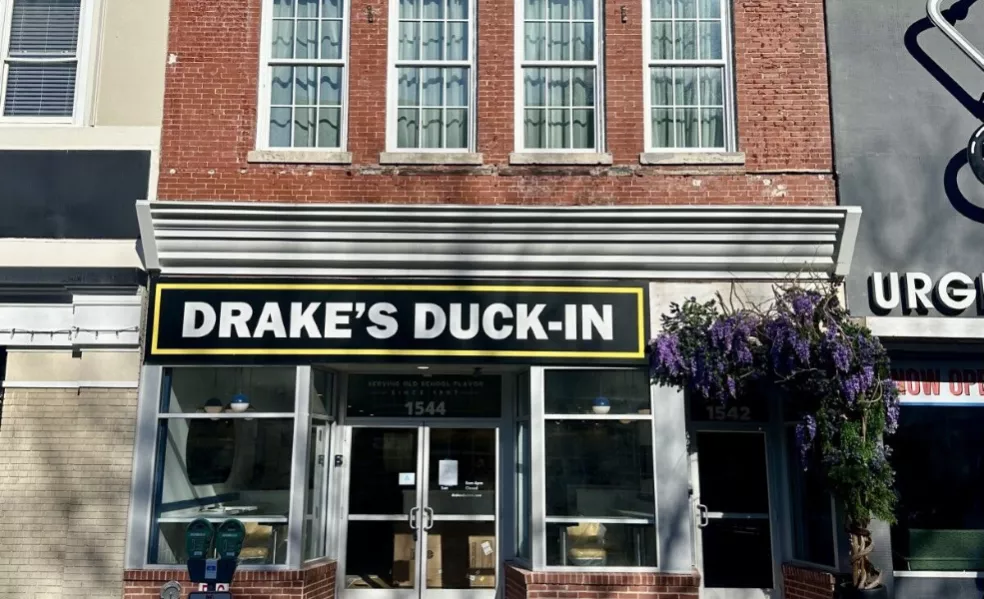2024 Preservation Awards | Longstreet Theatre
Thursday, May 16th 2024

WINNER | Preservation, Rehabilitation, or Restoration (commercial, institutional, rental, or municipal)
Longstreet Theatre | 1300 Greene Street
University of South Carolina — Property Owner
Midwest Maintenance Inc. — Contractor
Meadors, Inc. — Architect & Preservation Consultant
Originally called College Hall at its completion in 1855, Longstreet Theatre ranks among Columbia’s most iconic historic buildings and is arguably one of the best examples of Greek Revival architecture in the capital city. For nearly 170 years, the temple-like landmark building has served as a Civil War military hospital, a Reconstruction-era arsenal and armory, science classrooms and laboratories, a gymnasium, and, since 1977, as a theatre in the round.
Deteriorating character-defining elements prompted the University of South Carolina to work with Charleston-based Meadors, Inc., which conducted a comprehensive analysis of material composition and conditions that guided the restoration of existing details and replication of missing components.
Existing parts of the cypress architrave, which suffered from extensive rot, were repaired and replacement pieces fabricated based on the original materials. The intricate cast iron Corinthian capitals adorning the building’s columns required the replication of eleven cast iron acanthus leaves. Pediment restoration involved removal of an inappropriate 1970s-era casement window and the installation of a circular sash fashioned after consulting archival images. Restoration of Corinthian elements on the east elevation involved stabilizing existing and replicating missing sections composed of terra cotta and stucco, in addition to securing elements with stainless steel hardware as an alternative to deteriorated original iron fasteners.
As many as 24 layers of paint were removed from the building’s stuccoed exterior, and petrographic stucco analysis determined the recipe for compatible materials used in repairing the building’s parged walls. Cross-section paint microscopy informed the building’s restorative finish scheme. All work performed on this National Register of Historic Places site adhered to The Secretary of the Interior’s Standards for the Treatment of Historic Properties.
Before & After
Images courtesy Meadors, Inc.
Explore the
Economic Impact Study
This study's findings reinforce our long-held position on the importance of historic preservation for the city's economy and support our work advocating for policies that encourage preservation and the reuse of historic buildings. Columbia’s architectural heritage is not simply an exercise in nostalgia; it is an informed, strategic investment in the future.
Check out some of the other 2024 Preservation Award recipients:

2024 Preservation Awards | Maxcy Gregg House
Appreciating the value that historic buildings provide as unique work environments, owners Todd Avant and Mullins McLeod acquired this ca.-1841 former residence, which had fallen into disrepair following years of commercial use. One of Columbia’s oldest former residences, the antebellum property required extensive exterior, interior, and site work—rehabilitation guided by the State Historic Preservation Office and the National Park Service to qualify for historic tax credits and the Bailey Bill tax abatement.

2024 Preservation Awards | Morgan Hall
Listed in the National Register of Historic Places in 1987 as a contributing building within the Benedict College Historic District, Morgan Hall bears the distinction of being the HBCU campus’s first separate facility intended as the president’s residence. Erected in 1895, the Queen Anne style, three-story building marked a notable achievement in the development of Benedict 25 years after the institution’s founding as one of the earliest Black colleges in the South during Reconstruction.

2024 Preservation Awards | 1214-1216/1218-1220 Taylor Street
Historically known as the Hillman’s Sporting Goods and Community Finance Company buildings, respectively, these ca.-1915 commercial destinations experienced more than a century of use by various owners that modified elements of their original appearance. Current sibling owners Greg Middleton and Sara Middleton Styles teamed up with Rogers Lewis, LTC Architects, and Pyramid Construction to design and implement a rehabilitation that would benefit from Bailey Bill tax abatement and historic tax credits by following the Secretary of the Interior’s Standards for the Treatment of Historic Properties. In doing so, the historic character of these mixed-use buildings was retained and restored, while stimulating further economic vitality within the National Register of Historic Places-listed commercial district.




